Source: Wall Street News
On April 2, Wednesday, after the US stock market closed, according to Xinhua News Agency, US President Trump signed two executive orders regarding the so-called "reciprocal tariffs" at the White House, announcing a 10% "minimum baseline tariff" on trade partners and imposing higher tariffs on certain trade partners.
According to CCTV News, Trump stated that the US would calculate all tariffs, non-tariff barriers, and other forms of comprehensive tax rates against countries that pose a significant threat to the US. The tariffs will not be completely reciprocal, and the US will charge these countries about half of the fees.
CCTV reported that the White House issued a statement saying that Trump declared a national emergency on Wednesday to enhance the US's competitive advantage, protect US sovereignty, and strengthen national and economic security.
CCTV cited the aforementioned White House statement, indicating that Trump would impose a 10% "baseline tariff" on all countries, which will take effect at 12:01 AM Eastern Time on April 5. Additionally, Trump will impose personalized higher "reciprocal tariffs" on the countries with the largest trade deficits with the US, which will take effect at 12:01 AM Eastern Time on April 9, while all other countries will continue to adhere to the original 10% tariff baseline.
According to the chart released by the White House, the US will impose a 10% tariff on imports from the UK, Australia, Brazil, Saudi Arabia, the UAE, and Kuwait, a 17% tariff on Israeli goods, a 20% tariff on EU goods, a 24% tariff on Japanese goods, a 25% tariff on South Korean goods, a 26% tariff on Indian goods, a 36% tariff on Thai goods, a 39% tariff on Iraqi goods, a 46% tariff on Vietnamese goods, and a 49% tariff on Cambodian goods, the highest rate.
CCTV mentioned that the aforementioned White House statement indicated that some goods would not be subject to the "reciprocal tariffs," including steel and aluminum products already subject to Section 232 tariffs, automobiles and auto parts, goods that may be subject to future Section 232 tariffs, and certain minerals and energy that the US does not possess. Additionally, gold bars, copper, pharmaceuticals, semiconductors, and wood products are also exempt from the "reciprocal tariffs."
The statement also noted that for Canada and Mexico, goods that comply with the United States-Mexico-Canada Agreement (USMCA) will continue to receive tariff exemptions.
The Trump administration stated that Canada and Mexico would be temporarily exempt from the 10% baseline tariff and the reciprocal tariffs targeted at specific countries.
According to CCTV, Trump also announced on Wednesday a 25% tariff on imported automobiles. Trump stated that the 25% tariff on automobiles would take effect on April 3.
Following Trump's announcement of the baseline tariff rates and the specific tariffs faced by various countries, US stock futures fell. After the US stock market closed, Nasdaq 100 futures dropped over 3%, S&P 500 futures fell nearly 2%, and Dow futures declined about 1%. In the Asia-Pacific market, stock index futures further widened their declines, with Nasdaq 100 futures dropping over 4%, S&P 500 futures falling over 3%, and Dow futures decreasing over 2%.
The foreign exchange market reacted strongly. The euro initially saw its gains rapidly expand before retreating. The euro against the US dollar, which was around 1.0860, briefly broke above 1.0920, rising about 1% during the day, but later retraced more than half of its gains.
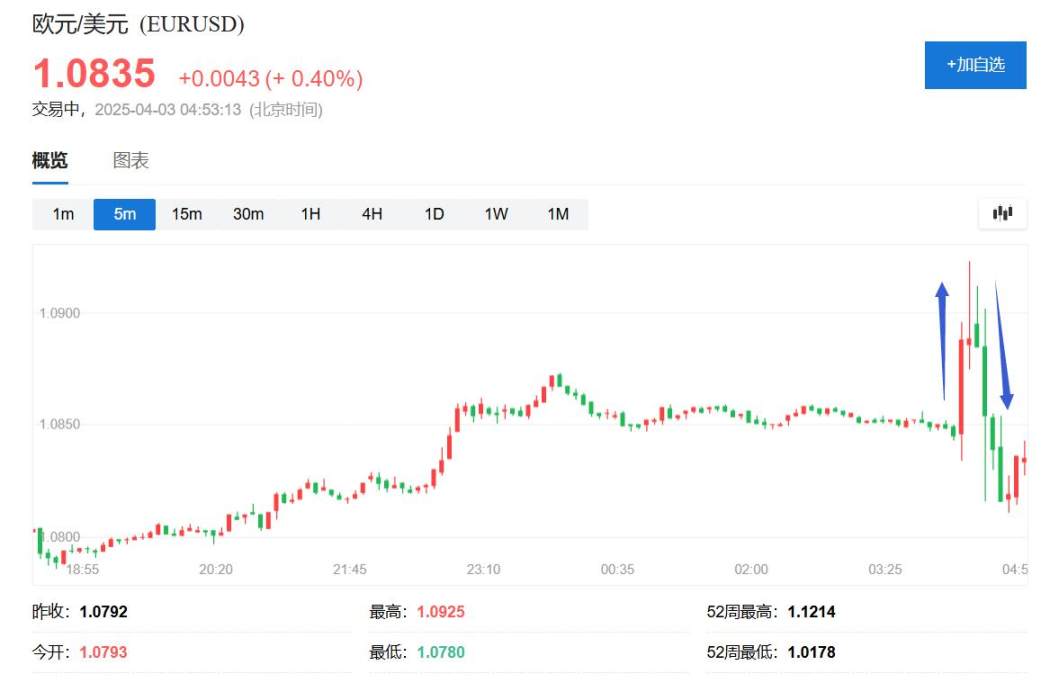
The spot price of Bitcoin (BTC) surged to $88,000, reaching a high not seen since March 25, rising over $4,000 or more than 5% from the day's low before retracing most of its gains, falling back below $86,000, and briefly dipping below $85,300, a drop of over $3,000 from earlier highs.
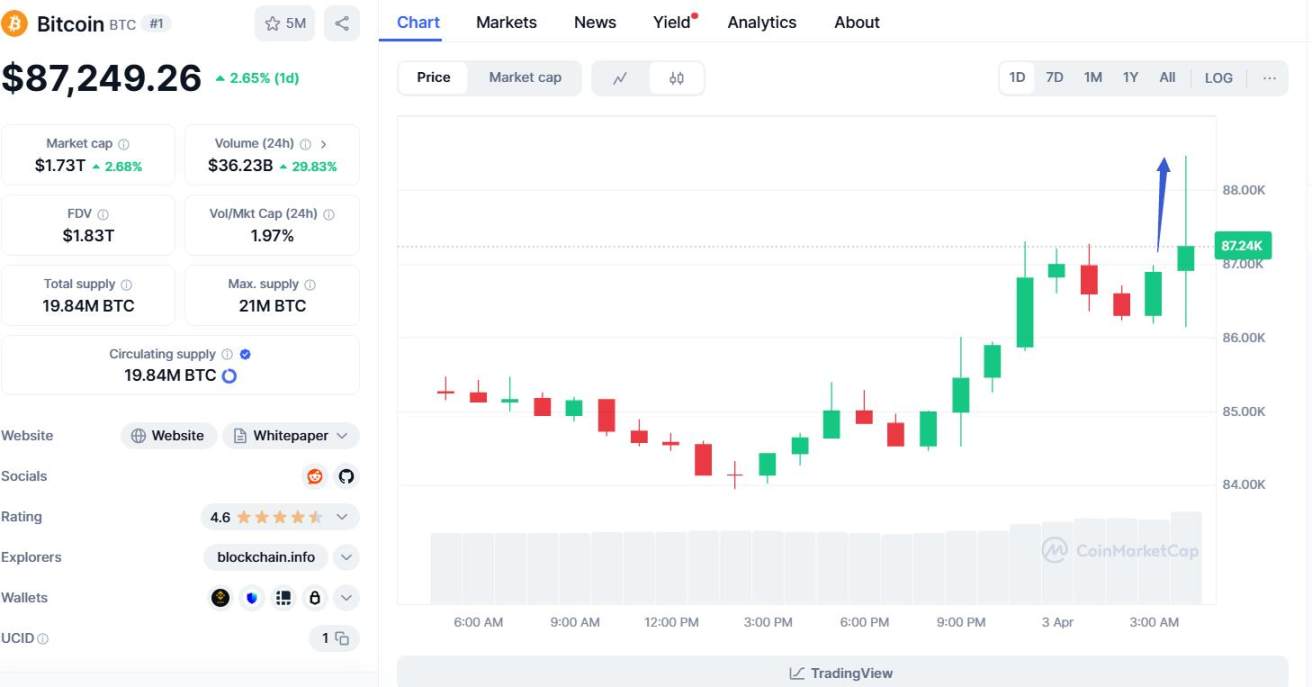
Spot gold experienced a short-term "flash crash," plunging from around $3,125 to nearly $3,105, turning to a decline of over 0.1% during the day, but quickly rebounded, briefly breaking above $3,140 and reaching a daily high, with an intraday increase of nearly 1%.
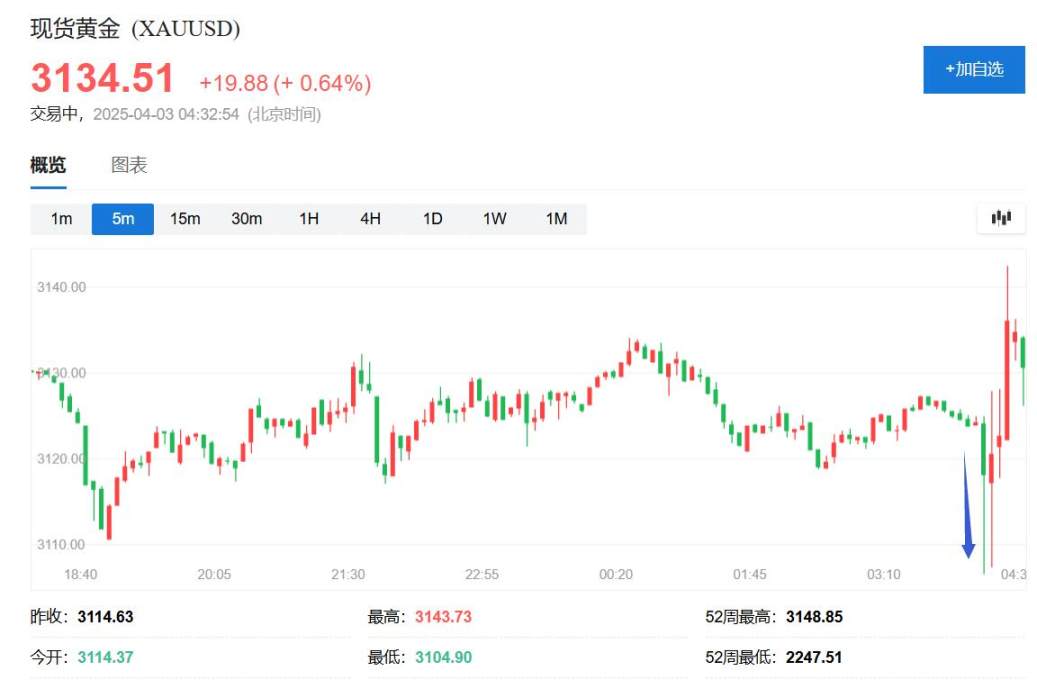
COMEX June gold futures also experienced a "flash crash" before rebounding, briefly rising above $3,200 after the US stock market closed, setting a new intraday high record created during Thursday's US stock market, with an increase of nearly 1.8% compared to Tuesday's close.
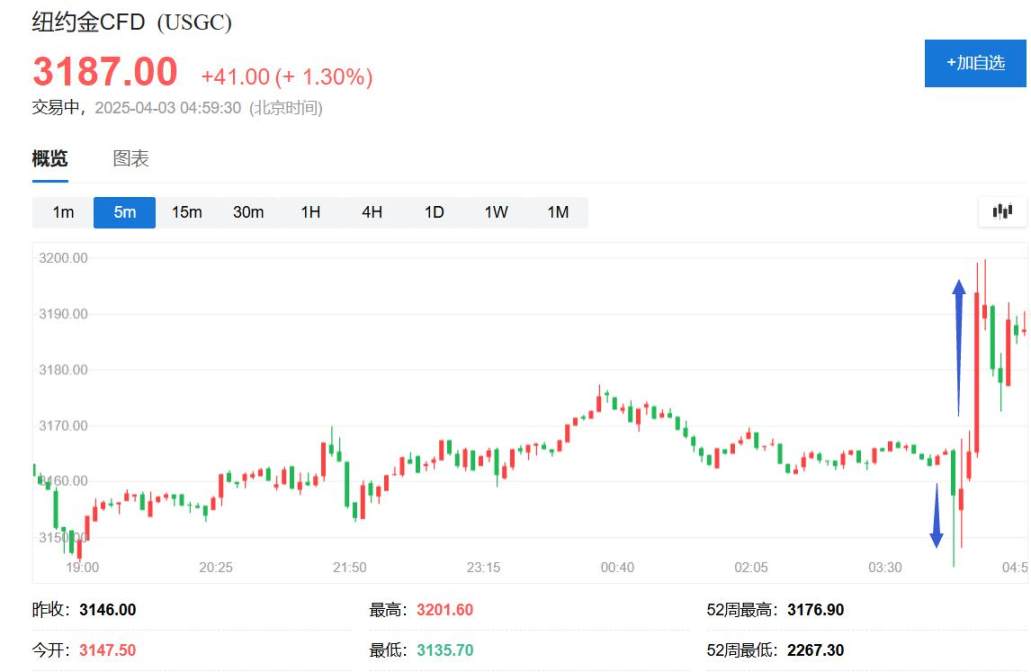
US Treasury prices saw a V-shaped reversal, with yields initially rising and then falling. The yield on the US 10-year benchmark Treasury rose above 4.23%, reaching a daily high, but quickly fell below 4.20%, briefly approaching 4.11%, nearing the intraday low set since March 4 after the release of the "little non-farm" ADP employment report before the US stock market opened.
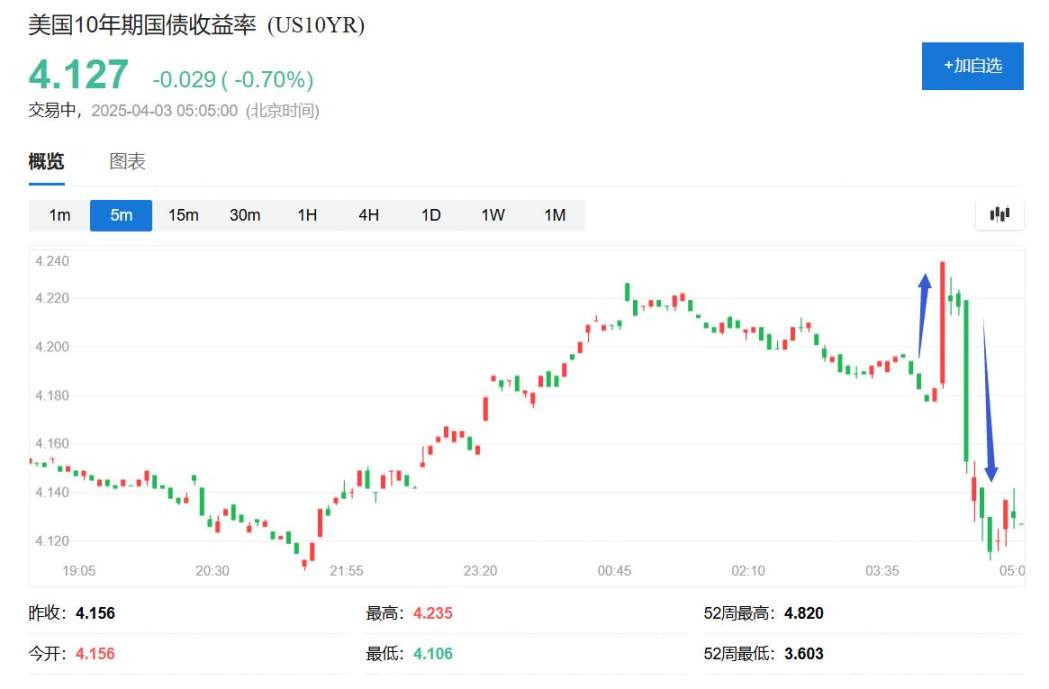
免责声明:本文章仅代表作者个人观点,不代表本平台的立场和观点。本文章仅供信息分享,不构成对任何人的任何投资建议。用户与作者之间的任何争议,与本平台无关。如网页中刊载的文章或图片涉及侵权,请提供相关的权利证明和身份证明发送邮件到support@aicoin.com,本平台相关工作人员将会进行核查。




